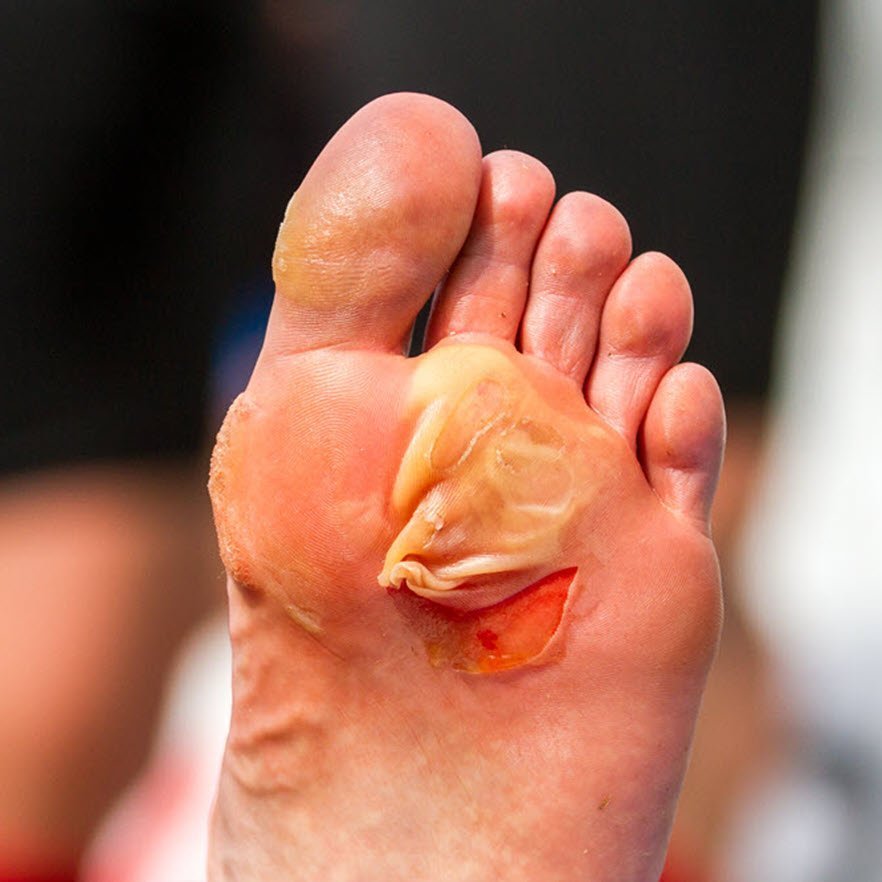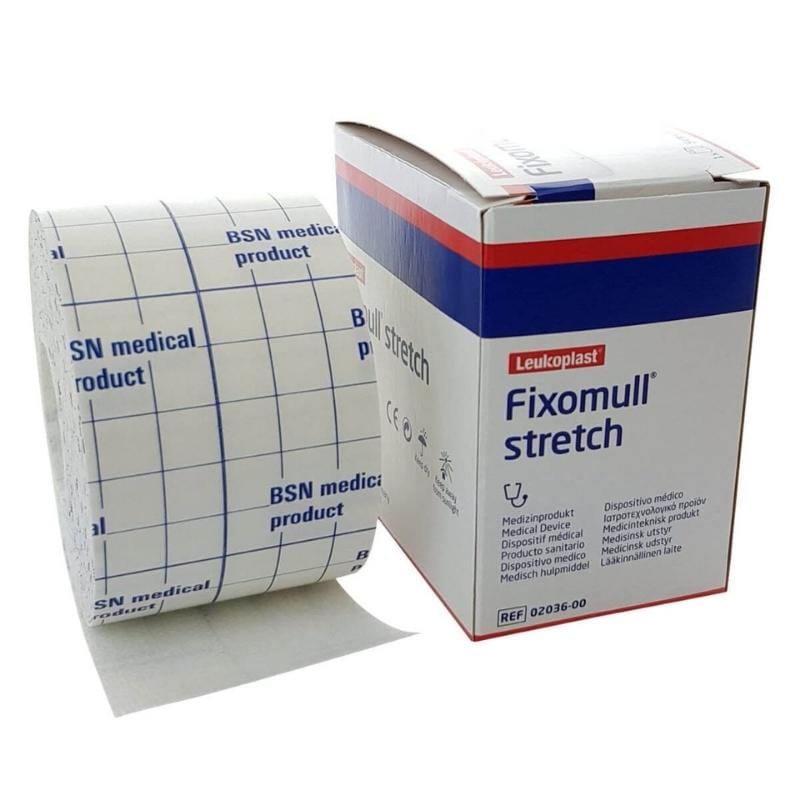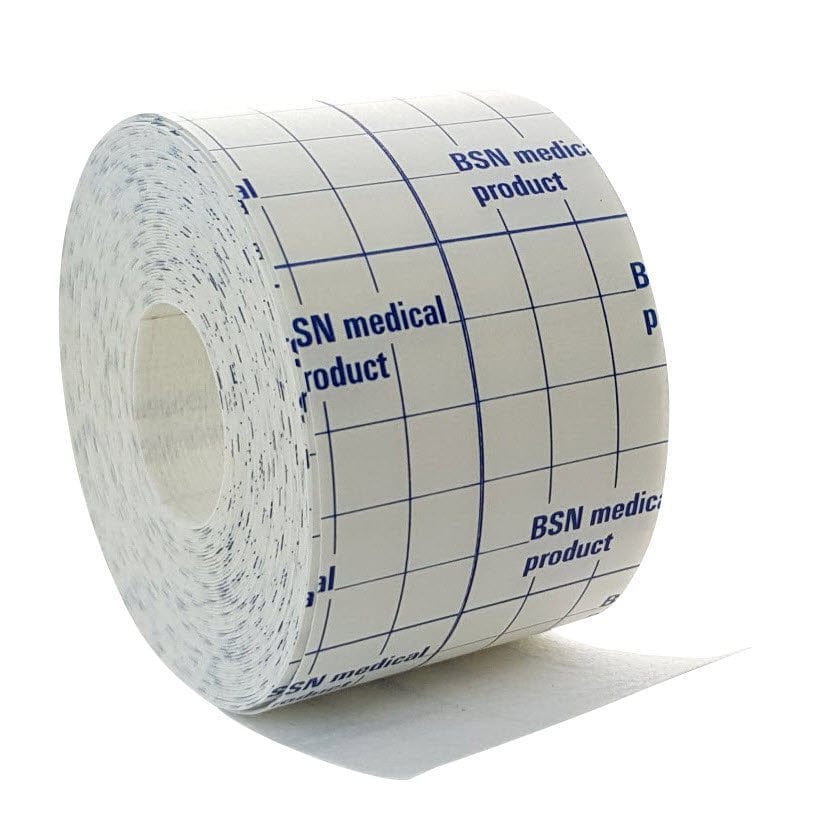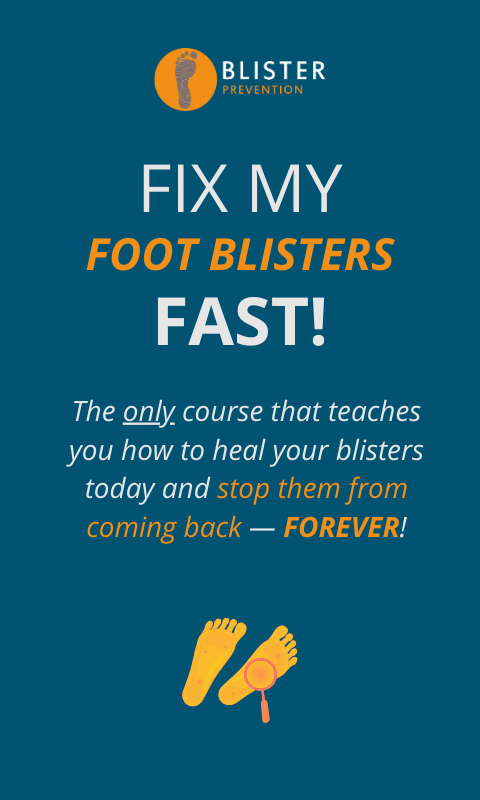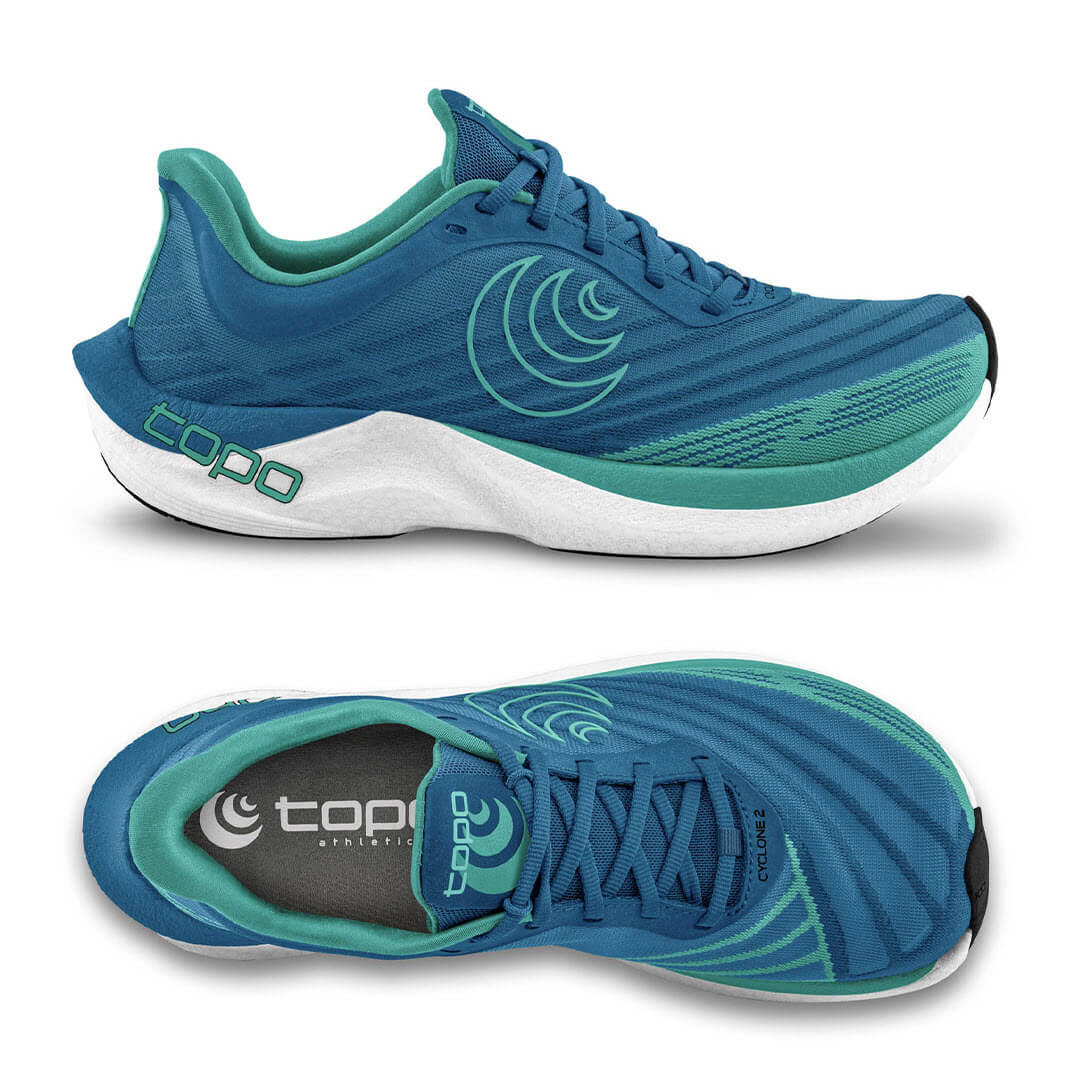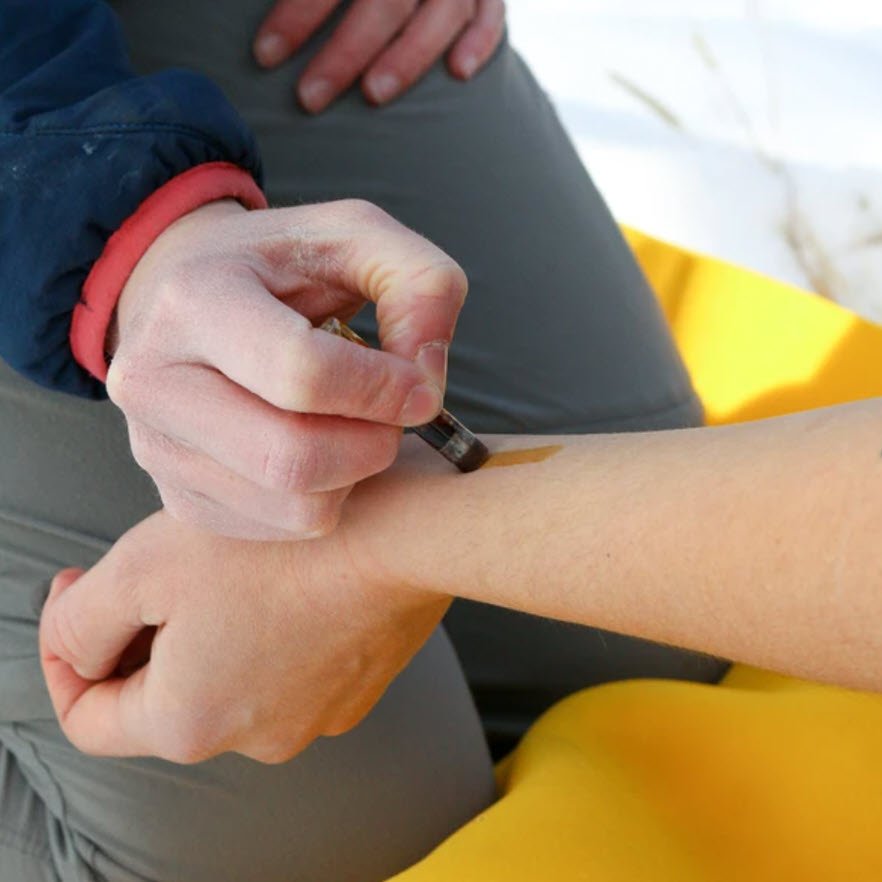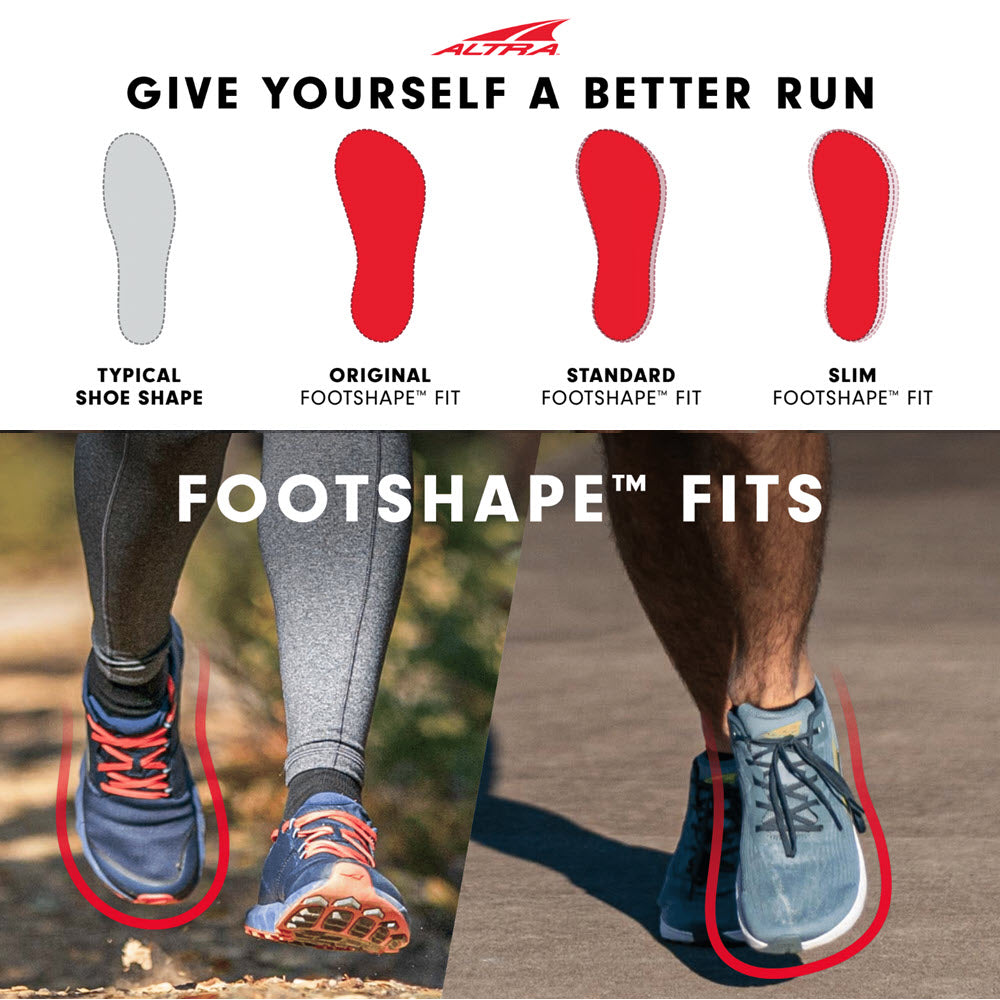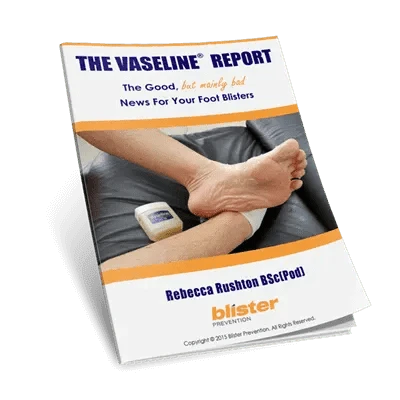It's difficult to walk or run with a blister on the bottom of your foot, particularly under the ball of your foot. This is a major weightbearing area of your foot, after all. In this article you'll learn about the anatomy and biomechanics of the ball of your foot, why it's susceptible to blisters and the best ways to prevent them.
Different Locations of Blisters Under the Ball of Your Foot
The location is important. It gives clues as to the cause and how to fix them. You can get them:
- Under the big toe knuckle (below)
- Under the 2nd toe knuckle
- Under the little toe knuckle
- Right in the middle of the forefoot (above)
- Less commonly across the WHOLE ball of the foot!
Deroofed blisters under the first forefoot joint
Why We Get Blisters on Bottom of Feet
Firstly, ball of foot blisters are just like any other blister; they're caused by shear distortions in the skin. You can think of shear as stretching - the skin stretches back and forth with every step. These are the factors that go into creating blister-causing shear distortions:
- Pressure: This is a weightbearing area of your foot, more so that most other parts of the foot.
- Moving bones: You may not be aware, but foot bones move around quite a lot under the skin, especially the bones in this part of the foot. This is the movement force that contributes to friction blister formation.
- High friction levels: It's warm and humid in your shoe. That means high friction levels - things are clammy and sticky. What's more, the fabric of your sock and shoe lining are made from relatively high friction materials. This is intentional and quite appropriate as it helps keep your foot stable in your shoe. It's only a problem if we're getting blisters. Thankfully, there is an easy way around this which I'll explain with a video shortly.
- Repetition: The more time the skin stretches back and forth, the more likely it is to fatigue. When the connections between skin cells fatigue, a tear occurs under the skin surface. Within two hours, that injured area fills with fluid and makes the skin surface bubble up to look and feel like what we know as a blister.
Anatomy and Biomechanics
Ball of foot anatomy
Anatomically, this is where the metatarsal heads are. These are weightbearing bones so the skin is subjected to high pressures. And as part of normal healthy foot function, the metatarsal heads move back and forth under the skin.
Ball of foot biomechanics & blisters under feet
Metatarsal heads move back and forth with every step we take:
- As we approach propulsion (push-off)
- When changing direction
- Going uphill and downhill
- Whether walking or running
Picture this. When the foot plants, the metatarsal heads skid forward over the skin, and then backwards during propulsion. Moving bones above, high friction levels below and weightbearing pressure compressing everything together, this creates a lot of skin shear (the cause of blisters). This is completely normal and usually below our blister-causing threshold - but not always. Watch this video to see how moving bones cause blisters.
You can imagine that as your activity increases in intensity and/or duration, shear may reach a point where it becomes excessive ... more than the skin can handle. At this point, skin damage occurs. And it occurs under the surface of the skin, a few layers deep. Blister medical researcher Stanley Comaish described this skin damage as epidermal fatigue because the connections that bind these skin layers tear under the excessive and repetitive shear load. This type of injury is not as deep as the blood vessels, so bleeding or blood blisters do not ordinarily occur.
The 5 Best Strategies For a Blister on Ball of Foot
1. Taping Techniques
Preventive taping is a good place to start. Pre-taping won’t always work - be sure to read this article to understand why. But it’s a good starting point if you haven't tried anything. In the following video, I'll show you how. The tape I use is Fixomull Stretch but you can use another tape if you prefer.
2. Cushioned Insoles
Cushioning has a double blister prevention effect. Firstly, it reduces peak pressure a little and therefore reduces skin shear. And secondly, cushioning materials absorb shear via their shear modulus. That is, shear goes on within the material so less of it occurs within the skin. Research has shown some cushioning does this better than others, for example, peer-reviewed research shows that Spenco works a little better than Poron. It’s important to know that blisters can still form in spite of cushioning. But if you need just a little bit of blister prevention oomph, and your current insoles are old, worn or compressed, a new pair could make all the difference. Interestingly, the top surface of cushioning materials typically exhibit a high friction level! So if you're still getting blisters in spite of cushioned insoles, add the next strategy.

Spenco insoles
3. ENGO Blister Patches
This is the best way to keep friction levels low under the ball of the foot - better and longer-lasting than lubricants and powders. These patches stick onto the insole of your shoe (or orthotic) and they just stay there until they wear through about 500kms later. They make the friction side of blister prevention easy to take care of. Pictured are the large ovals. If you need broader protection, you can use the larger rectangle patches (see below). You can buy both the 4-Pack of large ovals and the ENGO Rectangle patches from our online store.

ENGO large oval patches under the ball of the foot reduce friction levels.

ENGO rectangle patches on the insole under the ball of the foot
4. Biomechanical Alterations
Blisters under the ball of the foot are often associated with structural and biomechanical issues. There is a lot that a podiatrist or sports medicine professional can do to alter your biomechanics to reduce the incidence of blisters under the metatarsal heads. This could involve paddings, insoles, orthotics, stretches (especially calf stretches), joint mobilisations and modifications in your gait or running style. Seriously consider seeing a podiatrist if you have ongoing blister issues here in spite of using the above three strategies! In the meantime, get started on calf stretches. Technique is everything with these, so get some advice if you're not sure you're doing it for maximum effect.

5. Donut Pads
Donut pads can be a bit bulky and cumbersome when used as a prevention. They come into their own as a ball of foot treatment though. If you have a blister, you'll need to take the pressure off it. The best policy is the thicker the material the better the pressure relief. I use 5mm podiatry felt, sometimes 7mm. But the thicker the material, the more room they take up in your shoe. I've written at length about donut pads here. However, if you get prevention right, you won't need these.
Take Home Messages
- The ball of the foot is inherently susceptible to blister development due to its skin properties, bone structure and important biomechanical functions.
- Taping, cushioned insoles and an ENGO blister patch must be tried. And don't forget calf stretches. These strategies will prevent the majority of ball of foot blisters.
- Consult a podiatrist if you continue to get blisters in this area so they can assess your foot structure and function and find the root cause of your sore balls of feet. They can advise on the best possible blister care and prevention for your feet.
